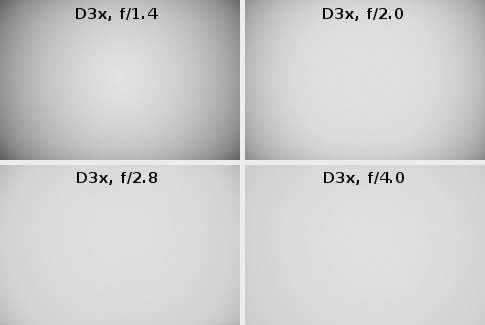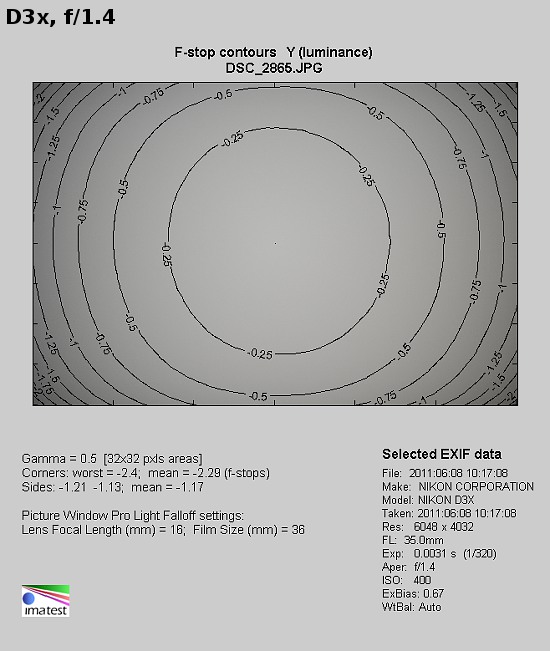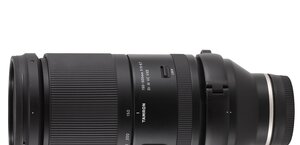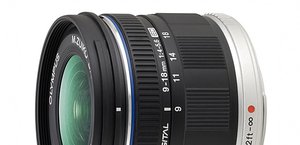Carl Zeiss Distagon T* 35 mm f/1.4 ZE/ZF.2
8. Vignetting

As you see, the vignetting is noticeable without any problems at the maximum relative aperture, where it amounts to 32% (-1.1 EV). The situation improves significantly on applying f/2.0 because then this aberration level reaches 17% (-0.53 EV). The problem disappears completely by f/2.8. A chart below shows how the Zeiss compares with its competitors.
Please Support UsIf you enjoy our reviews and articles, and you want us to continue our work please, support our website by donating through PayPal. The funds are going to be used for paying our editorial team, renting servers, and equipping our testing studio; only that way we will be able to continue providing you interesting content for free. |
- - - - - - - - - - - - - - - - - - - - - - - - - - - - - - - - - - - - - - - - - - - - - - - -
| |
Zeiss 1.4/35 |
Nikkor 1.4/35G |
Canon 1.4/35L |
Sony 1.4/35G |
Samyang 1.4/35 |
| f/1.4 |
32% |
32% |
32% |
24% |
21% |
| f/2.0 |
17% |
14% |
16% |
11% |
9% |
| f/2.8 |
5% |
5% |
8% |
4% |
4% |
As we wrote previously, because of the significant dimensions of the lens, we expected a good result but somehow it is not especially pronounced here. The Zeiss still loses to the Samyang and the small Sony.
Perhaps full frame will be much more favourable for the Zeiss? Let’s check it out.

The situation is a bit better but certainly we can’t say that the Zeiss left all his rivals behind. Quite the opposite is true – the values shown here are very similar to those of other lenses. At the maximum relative aperture the vignetting is easily noticeable, as it amounts to 55% (-2.29 EV). It is keenly felt also by f/2.0 where it reaches the level of 36% (-1.27 EV). By f/2.8 and f/4.0 the problem decreases to low or negligible levels because the values we got there are 17% and 8% respectively.
A chart below presents an exact comparison of the results, got by the Zeiss and its rivals.
| |
Zeiss 1.4/35 |
Nikkor 1.4/35G |
Canon 1.4/35L |
Sony 1.4/35G |
Samyang 1.4/35 |
| f/1.4 |
55% |
60% |
70% |
59% |
48% |
| f/2.0 |
36% |
44% |
50% |
43% |
34% |
| f/2.8 |
17% |
25% |
35% |
23% |
19% |
| f/4.0 |
8% |
15% |
27% |
15% |
12% |
 |






